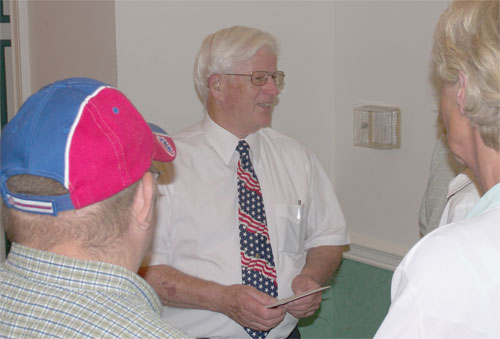14 Jul Six Persons Headed to Sierra Leone
On July 13, six persons from the US National Conference began traveling to Sierra Leone, where they will participate in a major leadership development initiative. This trip begins a three-year effort to bring renewal and strength to Sierra Leone Conference. It will include training, a series of additional teams, plus projects which UB churches in North America can help accomplish.
This is something of an “intervention,” and it comes only at the request of Sierra Leone Conference. The civil war in the 1990s cut short many things, including the training and development needed to successfully move the Sierra Leone churches from “mission field” to self-governing “national conference.” The conference realizes its need for outside help, and called to us for that help.
The persons currently in Sierra Leone are: Ruth Ann Price (team leader), Jeff Sherlock, Randy Fennig, Luke Fetters, Todd Fetters, and Billy Simbo. Todd Fetters is the only one who is not a member of the Global Ministries Leadership Team. Billy Simbo, a Sierra Leonean and former President of the Sierra Leone Bible College, now pastors a UB church in New Jersey.
These US leaders will spend six days meeting with about 70 African pastors and lay leaders. They will interact on leadership development, biblical decision-making, preaching, and principles of financial management. Presentations will be given, case studies will be considered, and then the participants will break into small groups to discuss specific ways to implement what they have learned. The overall theme involves drawing lessons from the life of Joseph. At the conclusion, each participant will be challenged to make a personal action plan for growing as a leader.
Randy Fennig and Ruth Ann Price visited Sierra Leone in February of this year to assess needs and bring back recommendations to the Global Ministries team. It was their impression that the war left such devastation and trauma that the Sierra Leoneans lack the ability to “rebuild the walls” without assistance. After the leadership training, Randy, a former Africa Inland Mission missionary in Mozambique, will spend an additional week in Sierra Leone studying needs and possibilities.
“We are giving this our best effort and hoping that something very good will happen,” says Gary Dilley, the US Director of Global Ministries.
Sierra Leone was our first mission field, started in the 1850s, so our ties and history run deep. They currently have 35 churches and 5000 members. Islam is advancing aggressively in Sierra Leone and now claims 60% of the population, compared to 30% tribal religion and 10% Christian. The evangelistic challenges for our churches are great. Sierra Leone is also the world’s poorest country.
Please pass this information along to your congregation and remember this effort in prayer.

